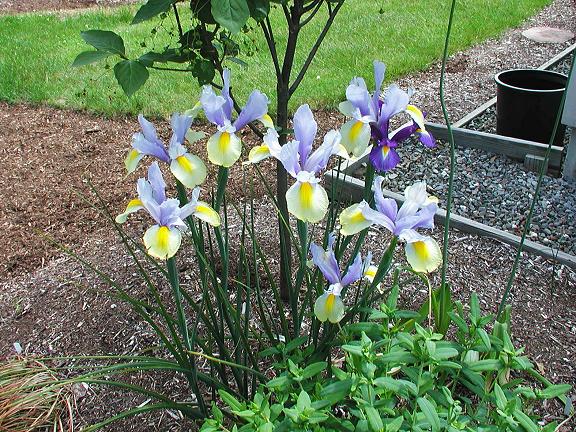瑞雪花園
布衣暖,菜根香,讀書滋味長。
正文
Irises (Iris germanica, I. sibirica)
German irises are also called bearded irises. "Bearded" refers to the fuzzy hairs that grow from the lower, petal-like sepals. Although quite spectacular at their peak, they lose their look in a hurry and must be deadheaded.

Siberian irises are extremely hardy, and best for beginners. They have blue, purple or white flowers; no beard; more slender leaves than their bearded cousins; they don't need deadheading and their seedpods are lovely in dried arrangements.

GARDEN COMPANIONS: Siberian irises are exquisite when paried with lady's-mantle, hardy geraniums, and other low, mounding plants whose form contrasts well with the delicate verticality of the iris leaves and flower stalks. Bearded irises look good with classic border perennials, such as delphiniums and peonies, as well as by themselves in mixed colors.
When: Siberian irises have fibrous roots and can be planted in spring, summer or fall. Spring is perferred. Bearded iris rhizomes are best planted mid-July to early August.
Where: Both types are well suited to perennial beds and borders.
How: Plant rhizomes with the tops just above the soil surface; rhizomes planted too deep are susceptible to rot.
TLC: Siberian irises take a season or two to become established and resent being diturbed; divide them when the clump is shaped like a doughnut, indicating a dead center.
Bearded irises go into semidormancy in midsummer and require less water than siberia irises. To keep plants healthy and vigorous, divide bearded irises every 3-5 years, 4 to 6 weeks after flowering, in July or early August.
IN LANDSCAPE
Siberian iris and emerging daylilies texturize the edge of this naturalized pond.

評論
目前還沒有任何評論
登錄後才可評論.




